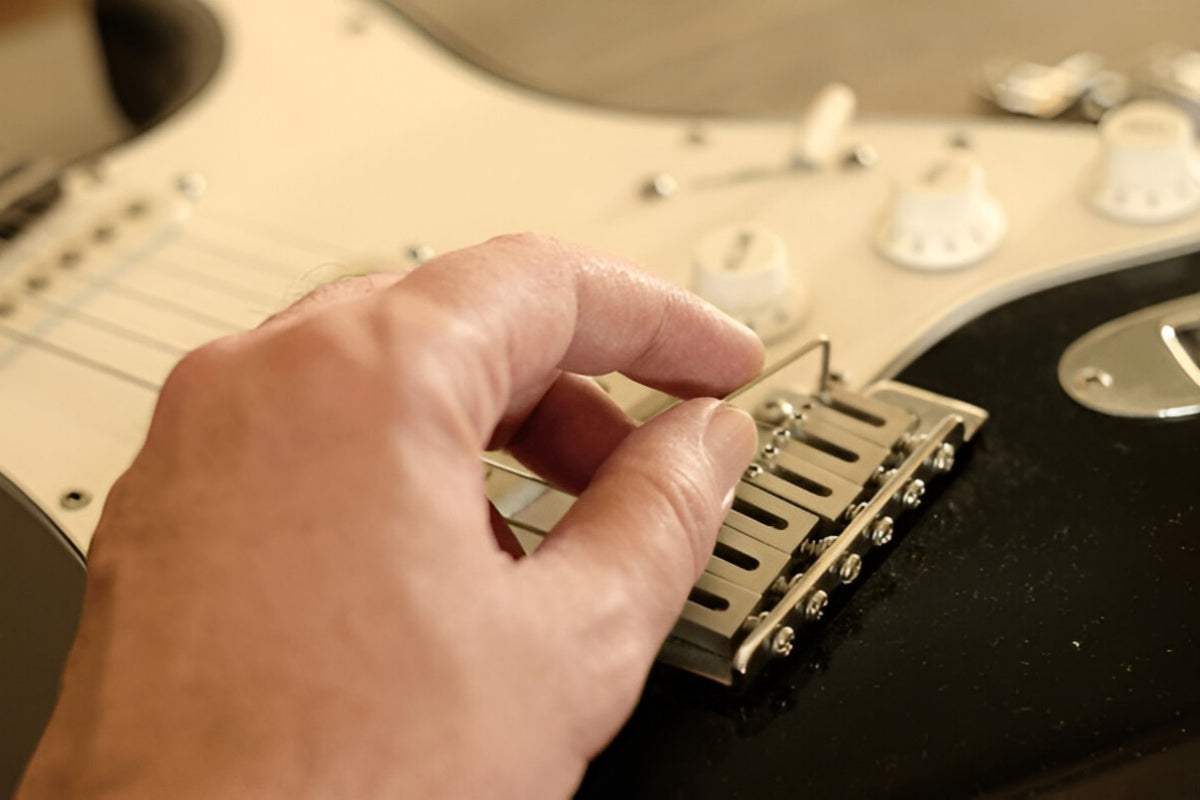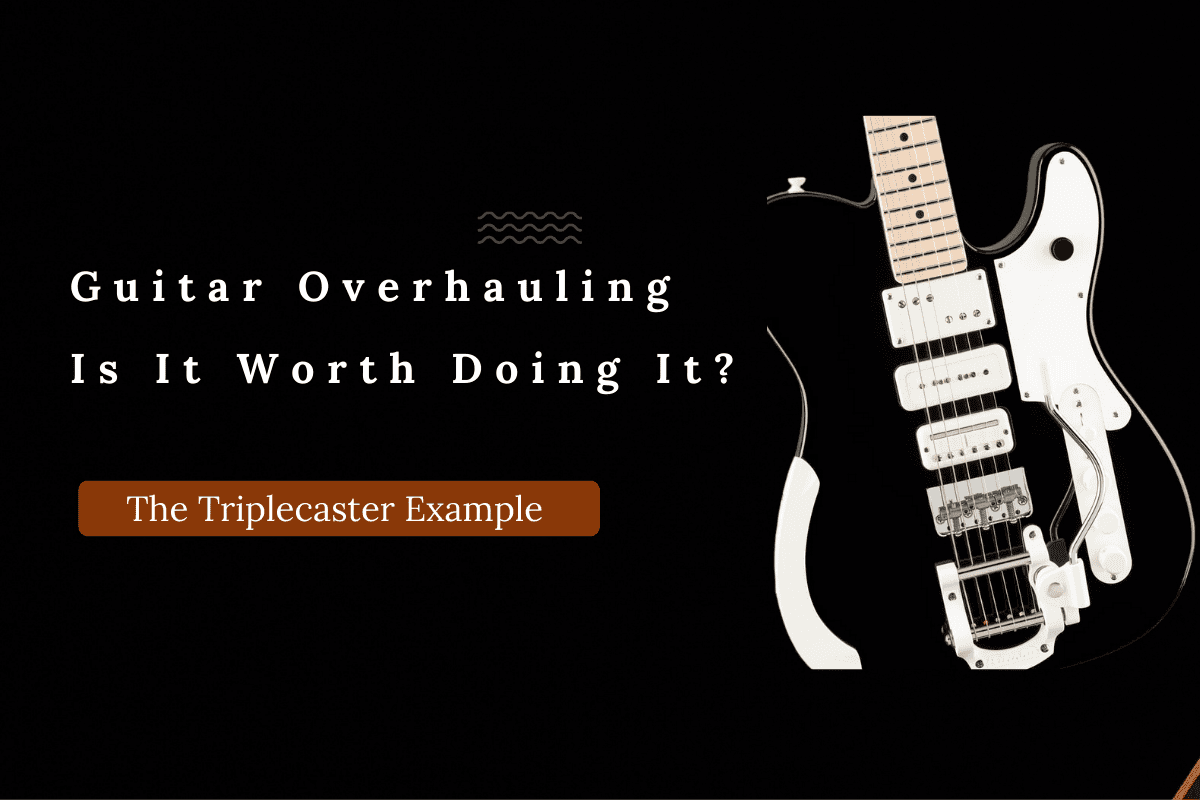A capo is one of the most versatile tools in your guitar arsenal. Musicians have used these simple, yet incredibly powerful devices to expand their playing capabilities, simplify chord shapes, and open up new creative possibilities. Whether you are a beginner who’s just started exploring the instrument or a seasoned veteran looking to enhance your craft, understanding the guitar capo can revolutionize your playing.
So, let’s take a look at everything you need to know about guitar capos, including their purpose, all the different types, the best ways to use them, and how they can transform your musical journey.
What Is a Guitar Capo?
Capo is an abbreviation of the Italian word capotasto, which means head of the fretboard. They are clamped onto the neck of the guitar where they press down on all the strings at a specific fret, this effectively shortens the length of the strings and raises their pitch.

Their primary purpose is to allow guitarists to play in different keys without having to change their finger positions for chord shapes. But they can also be used for so many other tasks, as we’ll find out soon.
How Do Capos Work?
When you place a capo on a guitar, it basically acts as a new moveable nut. The ‘new nut’ created by the capo changes the tuning of the open strings, therefore changing the tonal center of the guitar. For example, if you put a capo on the second fret and then play an open E chord shape next to the capo (new nut), the sound produced will be an F# chord. Move the capo up a fret and you’ll get a G chord, up one more, a G# chord.
Capos Have So Many Uses!
Changing Keys
As mentioned, one of the primary reasons to use a capo is to quickly transpose songs into different keys without having to work out what new chords you need to play. This is great for singers, if the song is too low to sing comfortably in the open position, just move the capo up the neck to a place where it is easier to sing.
Simplify Chord Shapes
If a song features complex barre chords, such as G or D-shaped barre chords, using a capo might allow you to play it using far more simple root chord shapes.
Creating a Musical Vibe
Using a capo further up the neck creates a brighter, more ringing tone, which, when tremolo picked, is somewhat similar to a mandolin. This can be used to complement certain styles of music such as folk or country.
Experimentation
Using a capo encourages creative exploration allowing you to play unusual and extended chord voicings and create textures that you couldn’t make without one.
For example, I needed a G drone for a song I recorded a few years ago, I placed a capo on the 3rd fret, played a D-shaped power chord shape from the G note on the 5th fret of the D string, and then I got one of the studio engineers to press the B and high E strings at the 15th fret (but I could have used a partial capo instead). This created a massive sound which was the underlying drone of the whole song.
Types of Capos
There are various styles of capos, each features a different design and has its own set of advantages and disadvantages. So, let’s go through them…
Trigger Capos
These are the most popular types of capo because they are so simple to use.
They feature a spring-loaded mechanism allowing you to easily clamp them onto the neck with one hand. This makes them ideal for quickly attaching and detaching from your guitar’s neck during live performances.

Pros
-
Great for quick and easy changes when playing live
-
Convenient
-
Widely available
Cons
-
Depending on the radius of your guitar neck, the design can exert uneven pressure on the strings across the fretboard, therefore affecting tuning stability.
Screw Capos
These feature an adjustable screw mechanism that lets you control the exact amount of pressure applied to the strings. This allows you to create even tension across all the strings and minimizes tuning issues.

Pros
-
Precise
-
Reliable, once set, they tend to remain in position with no tuning problems
-
The best option for most professional setups
Cons
-
Takes longer to move and adjust than most other capo designs
Elastic Capos
Elastic capos are usually the cheapest option, their lightweight design features a strap that wraps around the neck and hooks onto itself. They’re a great option for beginners or players who only need a capo occasionally.

Pros
-
Very affordable
-
Simple to use
Cons
-
Not very durable
-
Inconsistent pressure can cause tuning issues and fret buzz
Partial Capos
As the name suggests, these do not cover all the strings but press down on a few specific ones. They can be used to create unique open tunings without having to alter all the strings, or for creative experimentation to produce unconventional chord voicings.

Pros
-
Great for getting creative with your guitar playing and songwriting
Cons
-
Niche use, not for everyone
-
You’ll need to understand music theory, especially chord construction, to get the most out of them
Toggle Capos
These are a variation of the Elastic Capo design but use a simple strap mechanism to secure the strings. Although similar, they offer slightly more adjustability than elastic capos, making them a better option for maintaining pressure across the fretboard.

Pros
-
Affordable
-
Lightweight
Cons
-
More precise than elastic capos, but not as good as screw capos
Choosing the Right Capo
Next, let’s take a look at a few things to consider before buying your first or next capo.
Guitar Type
Some capos are designed specifically for certain types of guitars, e.g., acoustic, electric, or classical guitars. Most capos will work well for either acoustic or electric, but if you need one for a classical guitar, it should be specifically designed for wider, flatter fretboards.
Build Quality and Manufacturer
Go for durable materials such as metal or high-quality plastic. A well-built capo will last for decades and provide consistent performance throughout. Capos are relatively cheap guitar accessories so don’t skimp, go for a recognized name such as Jim Dunlop, D’Addario, Fender, etc., it’s worth paying a little bit extra for quality.
Ease of Use
If you’re going to be using your capo while performing live, you’ll need one that is quick and easy to adjust, such as a Trigger Capo. If you need it for studio work, go for a more precise option such as a Screw Capo.
How to Get the Most out of Your Capo
Using a capo might seem very straightforward, but there are a few ways to make them even more effective.
It’s all in the Placement
Position the capo 5-10mm behind the fret that you want to become the ‘new nut’. Make sure that it is parallel with the fret to get an even tension across the strings. If you place it too far from the fret you will probably get buzzing and/or muted notes.
Avoid Excessive Pressure
When you’re using your fingertips to fret a note, you don’t have to press the strings into the fretboard, you only need to press them hard enough to push down on the next fret. The same applies to a capo, so make sure you apply enough pressure to hold the strings down without pressing them hard into the fingerboard.
Check Your Tuning
Always check your tuning after you’ve put the capo on the neck of your guitar. Even small changes in string tension can cause all the strings to go slightly out of tune.
Experiment with Partial Capos
If you’re well up on your music theory or enjoy trying out crazy alternate tunings such as the those used by, for example, Sonic Youth, then get yourself a partial capo for a whole new dimension of creativity. They are great for covering certain strings to make unique tunings and super interesting chord voicings.
Practice Transposing
Using a capo is an excellent way to get your head around the theoretical concept of transposition. As you change keys using the capo, think about the relationship between the different chords and how it affects the key you are playing. This is a great way of developing your understanding of music theory.
Wrapping it Up
Guitar capos are so much more than just a simple tool, they are a gateway to creative exploration and adding versatility to your playing and your songwriting. Whether you’re making a complex chord progression easier to play or experimenting with new alternate tunings, a capo can elevate your playing in countless ways.
So, get yourself whatever type of capo that will serve your needs well and experiment with its capabilities to inspire your musical journey.





